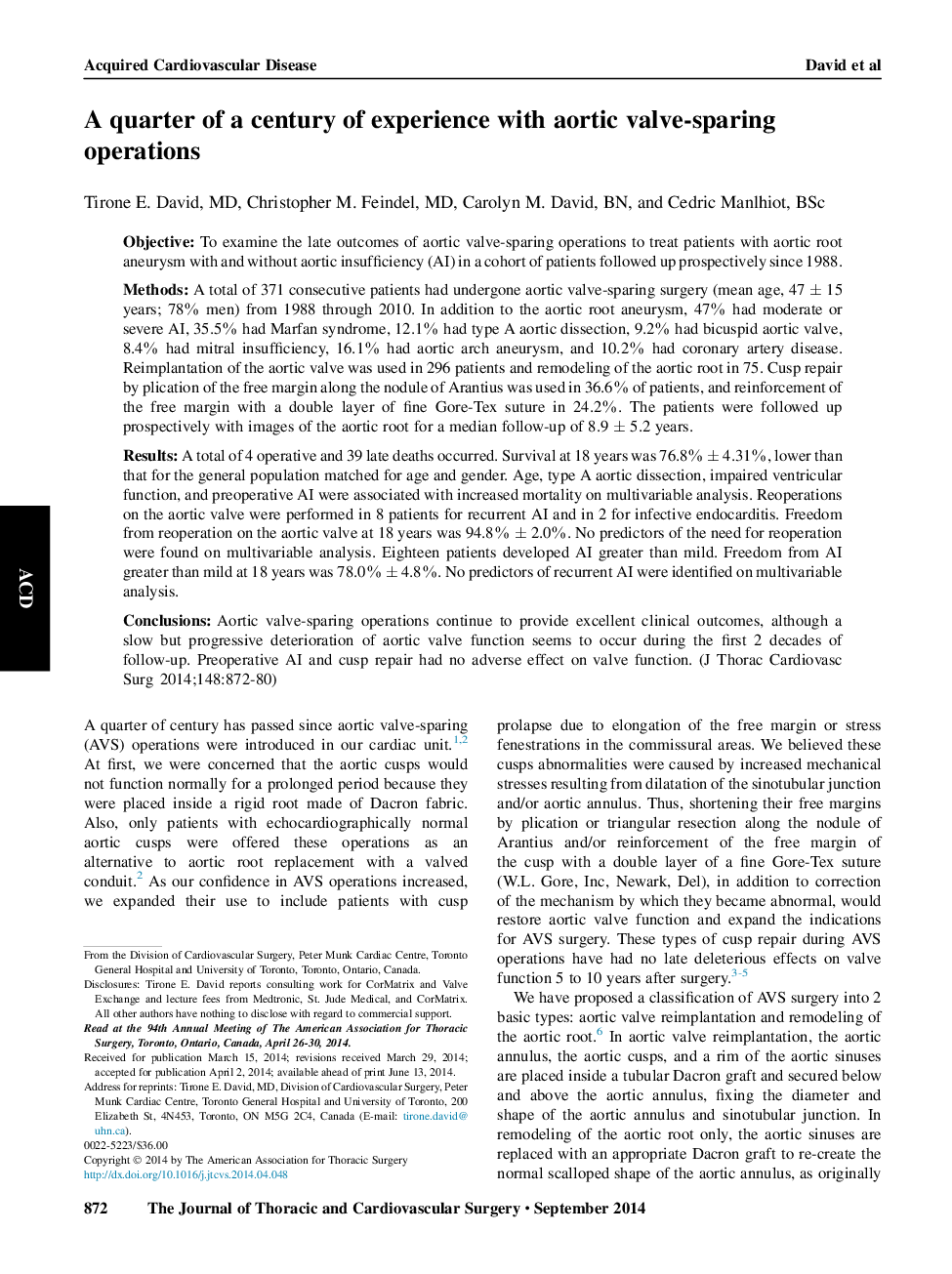| Article ID | Journal | Published Year | Pages | File Type |
|---|---|---|---|---|
| 5989273 | The Journal of Thoracic and Cardiovascular Surgery | 2014 | 9 Pages |
ObjectiveTo examine the late outcomes of aortic valve-sparing operations to treat patients with aortic root aneurysm with and without aortic insufficiency (AI) in a cohort of patients followed up prospectively since 1988.MethodsA total of 371 consecutive patients had undergone aortic valve-sparing surgery (mean age, 47 ± 15 years; 78% men) from 1988 through 2010. In addition to the aortic root aneurysm, 47% had moderate or severe AI, 35.5% had Marfan syndrome, 12.1% had type A aortic dissection, 9.2% had bicuspid aortic valve, 8.4% had mitral insufficiency, 16.1% had aortic arch aneurysm, and 10.2% had coronary artery disease. Reimplantation of the aortic valve was used in 296 patients and remodeling of the aortic root in 75. Cusp repair by plication of the free margin along the nodule of Arantius was used in 36.6% of patients, and reinforcement of the free margin with a double layer of fine Gore-Tex suture in 24.2%. The patients were followed up prospectively with images of the aortic root for a median follow-up of 8.9 ± 5.2 years.ResultsA total of 4 operative and 39 late deaths occurred. Survival at 18 years was 76.8% ± 4.31%, lower than that for the general population matched for age and gender. Age, type A aortic dissection, impaired ventricular function, and preoperative AI were associated with increased mortality on multivariable analysis. Reoperations on the aortic valve were performed in 8 patients for recurrent AI and in 2 for infective endocarditis. Freedom from reoperation on the aortic valve at 18 years was 94.8% ± 2.0%. No predictors of the need for reoperation were found on multivariable analysis. Eighteen patients developed AI greater than mild. Freedom from AI greater than mild at 18 years was 78.0% ± 4.8%. No predictors of recurrent AI were identified on multivariable analysis.ConclusionsAortic valve-sparing operations continue to provide excellent clinical outcomes, although a slow but progressive deterioration of aortic valve function seems to occur during the first 2 decades of follow-up. Preoperative AI and cusp repair had no adverse effect on valve function.
